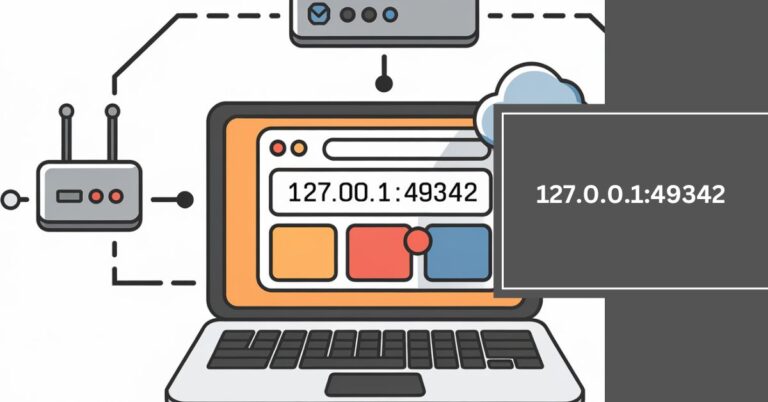Ssis 950 – Revolutionizing Data Management!
In the fast-evolving landscape of data management, SQL Server Integration Services (SSIS) 950 emerges as a powerful tool that enhances efficiency, accuracy, and security in data integration processes. As organizations increasingly rely on data to drive decisions and strategies, understanding SSIS 950 becomes essential for data professionals.
This article provides an in-depth analysis of SSIS 950, exploring its features, applications, benefits, challenges, and future trends.
What is SSIS 950?

SSIS 950, part of the SQL Server suite developed by Microsoft, is an advanced data integration and transformation tool designed to facilitate the extraction, transformation, and loading (ETL) of data from various sources into a centralized repository. SSIS 950 enables organizations to automate data workflows, ensuring that data is not only accurate but also delivered in a timely manner.
Key Characteristics of SSIS 950:
- Integration Capabilities: SSIS 950 connects to a variety of data sources, including databases, flat files, and cloud services.
- User-Friendly Interface: It offers a graphical user interface that simplifies the creation and management of data flows.
- Robust Performance: With improved performance features, SSIS 950 can handle large volumes of data efficiently.
Read More: How to Enroll for Veterinarian Disability Insurance
Evolution of SSIS:
The journey of SSIS began with its initial release as part of SQL Server 2005. Over the years, it has evolved significantly, incorporating user feedback and technological advancements.
Each version brought enhancements aimed at improving usability, performance, and compatibility with emerging data sources and technologies.
Key Milestones in SSIS Evolution:
- SSIS 2005: Introduction of data transformation capabilities and a new development environment.
- SSIS 2012: Enhanced support for cloud data sources and improved performance features.
- SSIS 2016: Integration with Azure, expanding capabilities to cloud-based data sources.
- SSIS 950: Focused on scalability and advanced analytics, allowing for more complex data workflows.
Key Features of SSIS 950:

SSIS 950 offers a plethora of features designed to streamline data integration processes. Understanding these features is crucial for leveraging the full potential of the platform.
1. Enhanced Data Transformation:
SSIS 950 introduces advanced data transformation components that allow for complex transformations with minimal coding. These features include data cleansing, aggregation, and validation tools, which enhance the quality and reliability of data.
2. Improved Performance:
With optimized execution plans and parallel processing capabilities, SSIS 950 significantly reduces the time required for data integration tasks. This performance boost is critical for organizations that deal with large datasets.
3. Robust Error Handling:
SSIS 950 incorporates advanced error handling mechanisms that enable users to manage data flow interruptions effectively. This feature ensures that data integrity is maintained, even in the event of unexpected errors.
4. Support for Big Data Integration:
As organizations increasingly adopt big data technologies, SSIS 950 provides native connectors for various big data sources, including Hadoop and NoSQL databases, enabling seamless integration with existing data environments.
5. Improved Security Features:
Data security is a significant concern for organizations today. SSIS 950 addresses this by offering robust security features, including encryption for data in transit and at rest, ensuring compliance with industry regulations.
Applications of SSIS 950:
SSIS 950 has a wide range of applications across various industries, reflecting its versatility as a data integration tool.
1. Data Warehousing:
Organizations use SSIS 950 to populate data warehouses by extracting data from operational systems, transforming it to fit the data warehouse schema, and loading it into the warehouse.
2. Business Intelligence:
SSIS 950 plays a critical role in business intelligence (BI) initiatives by ensuring that data is accurate and readily available for analysis. It enables organizations to consolidate data from multiple sources, facilitating comprehensive reporting and analytics.
3. Migration Projects:
When organizations transition to new systems or platforms, SSIS 950 helps migrate data efficiently, ensuring data consistency and integrity throughout the process.
4. Cloud Data Integration:
With the growing trend of cloud computing, SSIS 950 enables organizations to integrate data from on-premises systems with cloud services, providing a unified view of data across platforms.
Benefits of SSIS 950:

Implementing SSIS 950 offers several benefits that can enhance an organization’s data management capabilities.
1. Increased Efficiency:
Automation of data integration processes reduces manual effort, freeing up valuable resources for other strategic initiatives.
2. Improved Data Quality:
With advanced data transformation and validation features, SSIS 950 helps ensure that the data used for decision-making is accurate and reliable.
3. Scalability:
As organizations grow, their data integration needs change. SSIS 950 provides scalability, allowing organizations to expand their data integration capabilities without significant reconfiguration.
4. Cost Savings:
By streamlining data integration processes, SSIS 950 can lead to significant cost savings in terms of both time and resources.
Read More: Xatpes – The Future Of Digital Communication In The USA!
Challenges in Implementing SSIS 950:
While SSIS 950 offers numerous advantages, organizations may face challenges during its implementation.
1. Skill Gaps:
Successful implementation of SSIS 950 requires skilled personnel familiar with the tool and data integration best practices. Organizations may need to invest in training or hire specialized staff.
2. Complexity of Data Sources:
Integrating data from diverse sources can be complex, especially when dealing with legacy systems. Proper planning and testing are essential to ensure seamless integration.
3. Change Management:
Implementing SSIS 950 may require changes in existing processes and workflows. Managing these changes effectively is critical to avoid disruptions.
Future Trends in Data Integration with SSIS 950:
As data continues to grow exponentially, the future of data integration will be shaped by emerging technologies and trends. Here are some key trends to watch for:
1. Increased Automation:
The trend towards automation in data management will continue, with SSIS 950 likely to incorporate more AI and machine learning capabilities to enhance decision-making processes.
2. Real-time Data Integration:
As businesses demand real-time insights, SSIS 950 will evolve to support real-time data integration, enabling organizations to respond quickly to changing conditions.
3. Integration with Advanced Analytics:
The integration of SSIS 950 with advanced analytics tools will allow organizations to derive deeper insights from their data, enhancing strategic decision-making.
4. Emphasis on Data Governance:
With growing concerns about data privacy and compliance, SSIS 950 will likely focus on improving data governance features, ensuring that organizations can manage their data responsibly.
FAQs:
1. What is the primary function of SSIS 950?
SSIS 950 is primarily used for data integration, enabling organizations to extract, transform, and load (ETL) data from various sources into a centralized location for analysis and reporting.
2. How does SSIS 950 differ from previous versions?
SSIS 950 offers enhanced performance, improved data transformation capabilities, better error handling, and support for big data integration compared to its predecessors.
3. What industries can benefit from using SSIS 950?
SSIS 950 can benefit a wide range of industries, including finance, healthcare, retail, and manufacturing, by improving data integration processes and enhancing data quality.
4. Can SSIS 950 integrate with cloud services?
Yes, SSIS 950 provides native connectors for various cloud services, facilitating seamless data integration between on-premises systems and cloud-based platforms.
5. What are the security features of SSIS 950?
SSIS 950 includes robust security features, such as encryption for data in transit and at rest, to ensure data protection and compliance with industry regulations.
6. Is training required to use SSIS 950 effectively?
While SSIS 950 has a user-friendly interface, training is recommended for users to maximize its capabilities and ensure best practices in data integration.
7. What challenges might organizations face when implementing SSIS 950?
Organizations may encounter challenges such as skill gaps, complexity in integrating diverse data sources, and the need for effective change management during implementation.
8. How does SSIS 950 improve data quality?
SSIS 950 enhances data quality through advanced data transformation and validation features, ensuring that the data is accurate and reliable for decision-making.
9. What trends are shaping the future of SSIS 950?
Key trends include increased automation, real-time data integration, integration with advanced analytics, and a focus on data governance.
10. Can SSIS 950 handle large volumes of data?
Yes, SSIS 950 is designed to handle large volumes of data efficiently, making it suitable for organizations with significant data integration needs.
Conclusion:
SSIS 950 represents a significant advancement in the field of data integration, offering a robust set of features that enhance efficiency, accuracy, and security. By understanding its capabilities and applications, organizations can harness the power of SSIS 950 to improve their data management processes and drive better business outcomes.
Read More:







